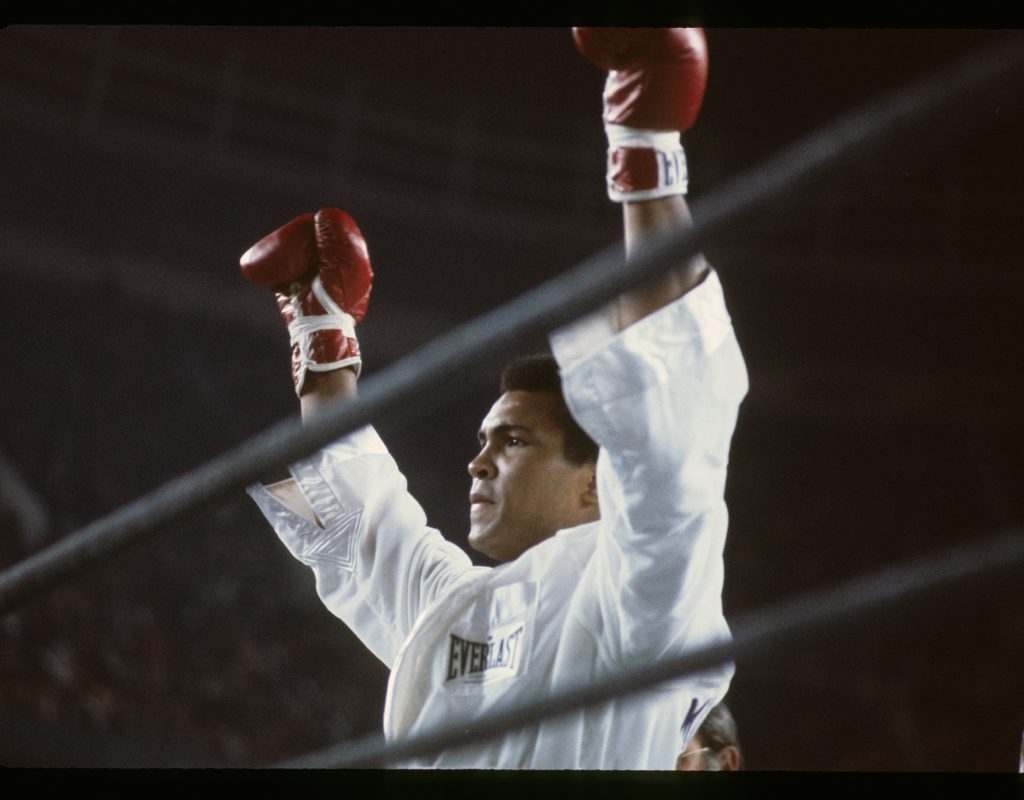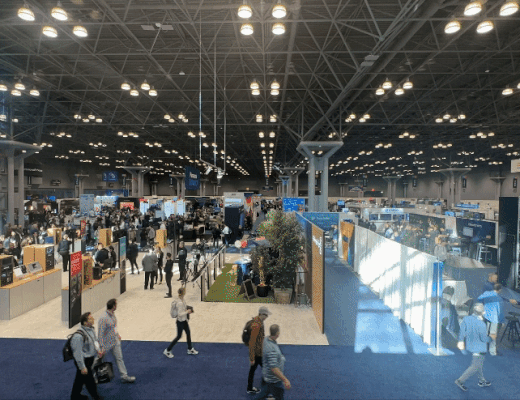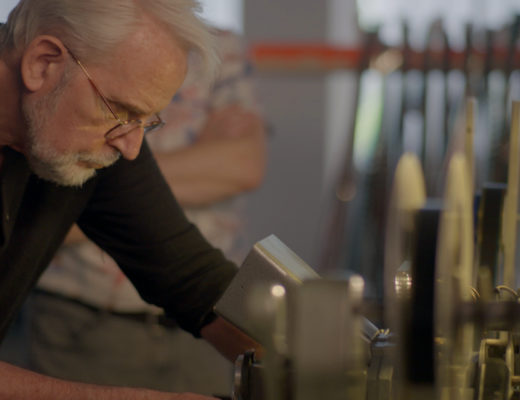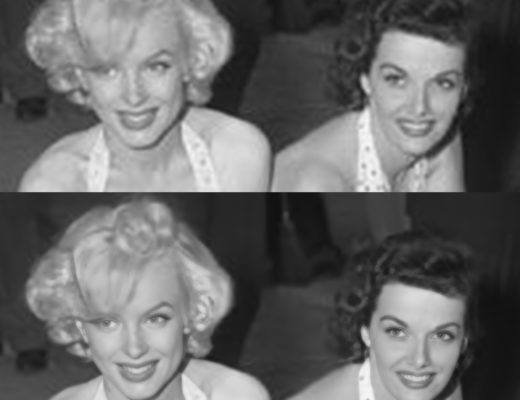Jake Pushinsky, ACE just won the ACE Eddie for Best Edited Documentary (non-theatrical) for the two part HBO documentary series called What’s My Name: Muhammad Ali. It was released in April of 2019.
His feature editing career began with A Guide to Recognizing Your Saints, which was an award-winner at Sundance in 2006.
This last ACE Eddie nomination season, he was nominated not only for the Ali documentary, but also for another documentary, Linda Ronstadt: The Sound of My Voice.
Our conversation today is about the Ali documentary for which he won.
This interview is available as a podcast.
(This interview was transcribed with SpeedScriber. Thanks to Martin Baker at Digital Heaven)
https://www.youtube.com/watch?v=olgoMbAz-ts
HULLFISH: Can you tell me a little bit about the movie? What kind of a documentary is it?
PUSHINSKY: This is a historical doc on Muhammad Ali as a basis, with the goal being to have Ali tell his story through his own voice. So we did no sit-down interviews. We shot very minimal new footage. It was 90 to 95 percent archival footage and pretty much a start-to-finish life story. The only things that we didn’t dig into too much were his family — mostly because he didn’t talk about it in any of the footage or audio that we found.
The story that he lived and told through interviews and footage over the years — one of the ways that I attacked the film was looking at it as a verite film that had been filmed over the course of his life. He was so documented that there were interviews before fights, after fights, when he wasn’t fighting, as if you had followed him doing a documentary. They’re the same interviews you’d want to get, except, instead, he was on Dick Cavett or some other show. But he really was so documented that we kind of treated it that way.
HULLFISH: What was the schedule like?
PUSHINSKY: I ended up being on for 19 months cutting. I started in January of 2017. I think in the fall of 2016 they brought a writer, Steven Leckart, on who put together a treatment and started doing some research. Then they brought on an archivist to start collecting footage. I came on in January 2017 and I think I was done around August September 2018.
HULLFISH: Looking at your imdb page, you switch back and forth between docs and narrative. What’s the draw for switching back and forth? Or is it anything to pay the bills?
PUSHINSKY: A little backstory. I grew up as a jazz musician up in San Francisco. Moved to Los Angeles with the hopes and dreams of being a musician of some sort. Got a job at a music house for commercials. Realized fairly quickly that the music that I wrote I enjoyed for myself and didn’t want that to turn into work. So I kind of shifted into music editing at that commercial house.
The music supervisor at the company, Dito Montiel, was writing a screenplay based on his life. Long story short — we started working on that. I taught myself how to cut so we could put together a little teaser for that film. Robert Downey Junior was good friends with the owner of our company. We gave him the teaser and the script. He loved it. He took it to Trudie Styler — Sting’s wife. She loved him. Five years later they get money to make the movie and Dito brings me on as the editor. It goes to Sundance and wins Best Director and Best Ensemble Cast. I got an agent and became an editor and a few months later a friend of my father’s was at my house and said, “A friend of mine is putting together a documentary about teenage jazz musicians. Would you have any interest?” Growing up as a jazz musician I said, “Absolutely.”
I got that job and that kind of started the back and forth between scripted and doc. Originally the doc thing was so overwhelming that I thought, “OK, I could only do this if it’s something I really care about, because it’s so intense and you just are so in the lives of those people.”
So I did a few scripted films before I came across the DeSean Jackson doc, which was a football documentary. I grew up a sports fan so I thought that would be fun.
Now it’s just been going back and forth and I really love having the scripted side of things — going into documentaries, thinking about the three act structure and the storytelling and all of that in the back of my mind just from reading enough scripts and then going from the documentary world back to the scripted thinking outside the box — throwing the script away — and just looking at the footage I have and thinking about what I can turn it into.
So I think it’s been great and I like going back and forth.
https://www.youtube.com/watch?v=piGVBqC49js
HULLFISH: What about landing this gig? How did you land this gig with the Muhammad Ali film?
PUSHINSKY: About five years ago I cut a doc called Silicon Cowboys about the history of the Compaq computer. Glen Zipper was a producer on that so we got to know each other. A few years later I get an email from him, “Hey, what’s your availability look like?”
I said, “I’m around.”
“Okay. I can’t tell you anything about it but there might be something coming”
A month later: “So it’s an HBO thing. It’s looking like it’s getting close. You still available?”
“Yes.”
“OK. It’s an HBO two part thing about somebody famous. Can’t tell you who it is. Are you still available?”
“Yes.”
“OK. It’s Muhammad Ali.”
“Great. Sign me up.” And he brought me on.
HULLFISH: You said this material covered the span of an Ali’s entire life. How do you organize that so you can find what you need and and figure out how to start structuring? Do you have to structure the organization like you structure the story?
PUSHINSKY: I had a great assistant editor Kristin Valentine on the project. So she started a couple of months before me because the archival footage started coming in.
It started with labeling everything — whether it was a sit-down interview, a fight, a TV show. We came up with categories of what to label the footage — whether it was b-roll from the time or what it was. And then she broke it down into a folder of decades, then bins within years if she had the actual time, and then, in the description of each clip she would put the date if she had it. She would put as much information into the description of each clip, so I could do a search if I was looking for a specific time; if I was looking for a specific show; if I was looking for a specific fight. She would do as much as she could in the description of the clip and also watched each clip and put markers.
I watched everything that came in. She probably watched everything at least twice. She was so on top of the organization. It was unbelievable. And then had a spreadsheet of everything that we had so we could also search through that and know where it came from and all of the details of the footage.
HULLFISH: And were you cutting an Avid? Premiere?
PUSHINSKY: Avid.
We had multiple bins with things overlapping and she had a bin that I never touched that was kind of the master bin of everything so that everything would always track back even if I moved things or made things different within one bin — it wasn’t affecting the master clip
Diving in was a tad overwhelming at the beginning of course, but the writer is a journalist by trade, so he basically wrote an article about Ali. Most of his research was through books and looking on YouTube so he had a story that we were hoping we could put together with the footage that existed.
But there were a few points — the 1960 Olympics being the first one that I knew was going to be a part of it. So I just kind of dug into that and I started finding these little pods of things that we were pretty sure were going to be in the film: his battle with the Vietnam War; certain fights we knew had to be there.
In the original treatment the idea was to split the two-part film in the middle of one of the fights. That ended up changing. It felt a little less satisfying to finish part one in the middle of a fight. It wasn’t “cliffhanger” enough. But I knew that that fight was going to be a big thing, so I just started attacking these little pods and then putting things together to make the structure.
HULLFISH: So creating a bunch of smaller stories or sub-sequences that you then build into acts or larger sequences. Did you guys do cards-on-the-wall?
PUSHINSKY: We had a very loose cards-on-the-wall. But that was only about 12 or 15 cards per part. So very very broad.
HULLFISH: Roughly in chronological order? Or was there some structure beyond that?
PUSHINSKY: The idea originally was to start with the 1960 Olympics and then go back to his early life and then basically run chronological. Kary Antholis, who is the executive from HBO, came in and had a great note that starting with the 1960 Olympics just didn’t feel right. It’s too early in his life but not far enough ahead. So he had the thought of starting with a teaser of the first Frazier fight — that is the end of Part One. So we tease that but then it’s basically chronological.
And that was not necessarily by design from the start as much as when we dug in — and having him tell the story — it just kind of felt the most natural and the least forced. It’s also sort of the easiest. It just felt right.
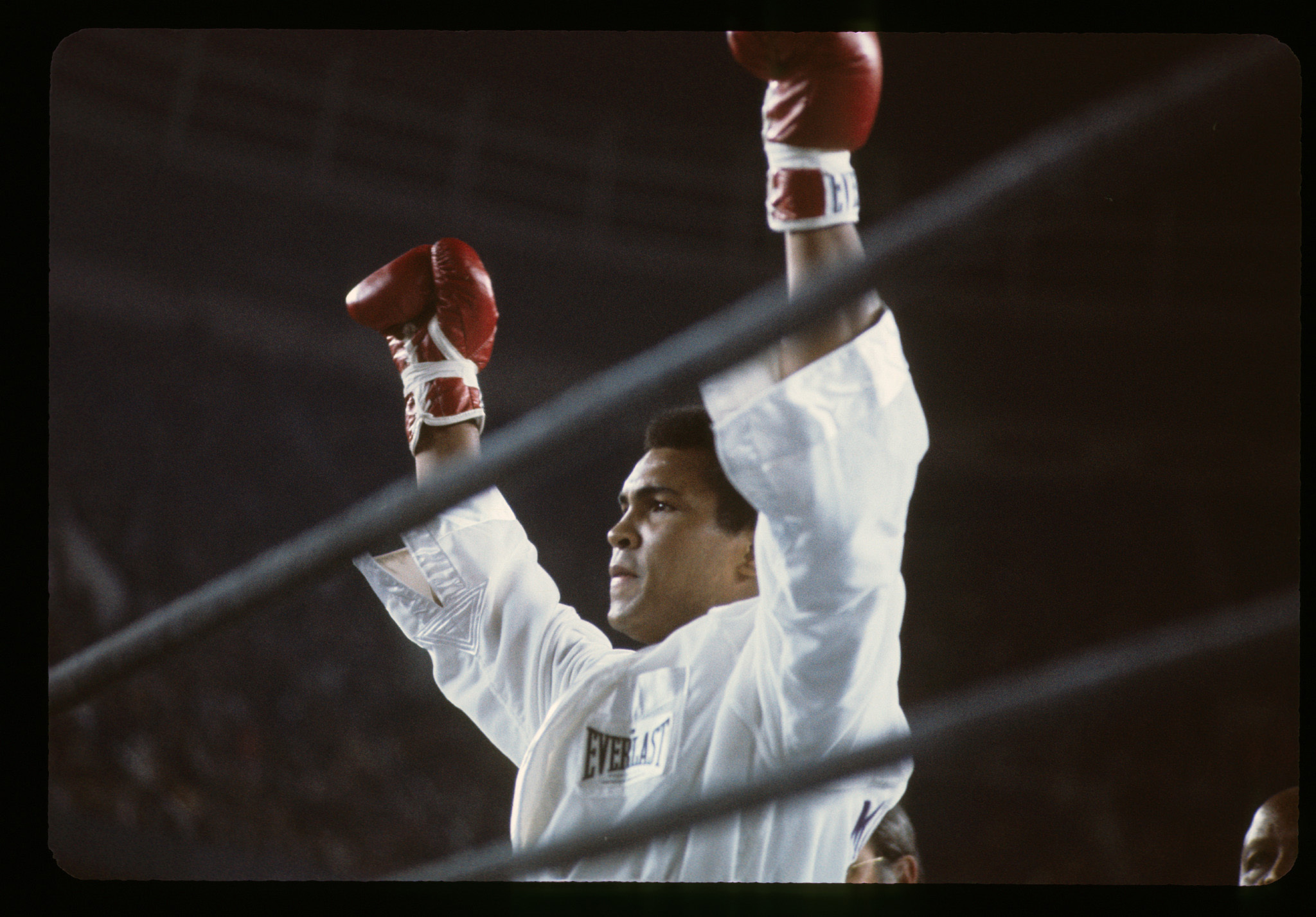 HULLFISH: Did you add temp music? And where were you pulling from? Where you were you going to Narrative temp scores? Were you looking at other documentary? Jazz? What was the thought?
HULLFISH: Did you add temp music? And where were you pulling from? Where you were you going to Narrative temp scores? Were you looking at other documentary? Jazz? What was the thought?
PUSHINSKY: Coming from a music background and having done some music editing in the past, I can’t cut without music even if it’s just playing in the room or something. If I’m starting a scene, I need to find a piece of music that kind of sets the tone for myself.
I filled it with temp — a lot of Terence Blanchard/ Spike Lee stuff to start. Definitely some Miles Davis from his kind-of-not-too-out-there-and-not-too-bop-world. Those late 60s early 70s — which is where the main chunk of Ali’s life really lived in the film. Then hitting needle drop stuff with James Brown and Otis Redding and music of the time to really kind of set that tone.
Doc-wise there was another doc that I did use the score to kind of come up with some ideas but I’m blanking on the name. Mostly that kind of Terence Blanchard vibe and then a couple of movies that I’ve cut in the past that had been temped with Terence Blanchard and then composed.
We brought on our composer, Marcelo Zarvis, and then sat with him and his music editor, Michael Bauer, and went through some of the stuff that he had and started working with them to kind of temp and also set Marcelo up for composition.
HULLFISH: And at what point did that conversation start happening? When did he come on?
PUSHINSKY: He was probably on for about six months. It was probably after I was on for about a year — so early 2018.
The music was tough. Antoine Fuqua — the director — really wanted it to be cinematic and big. He didn’t want it to feel like what a lot of documentary scores can feel like — where they kind of set a bed and a tone. He wanted the fights to live like a “Rocky” fight. He wanted them to feel big and have that tone of a modern score. But over this older footage that took some work.
He was on for a while and there was a lot of trial and error. He brought on a great music editor that really helped everything — from taking temp to getting the temp to feeling at a place where it was ready for composition to also taking some of Marcelo’s compositions and repurposing some of it for other parts of the film.
https://www.youtube.com/watch?v=1C6WUonM5J8
HULLFISH: Since he was on for so long, were you getting anything during the course of that? Like “Hey! Drop this in. Here’s a piano sketch” or something like that?
PUSHINSKY: There was a lot of back and forth with that — him handing me stuff, me putting it into the cut, watching with Antoine and the team, and going back and forth. Being that he was on early enough for me to interact, it wasn’t just “lock picture and off to the composer” which was great because it would change my cuts.
HULLFISH: As a “music guy” were you in on the mixes?
PUSHINSKY: Yeah. Luckily, I got to go. Schedule-wise it worked and everybody wanted me there. It worked out that I got to go to the mix which was great.
HULLFISH: What do you think are some of the values of having an editor in the mix and what do you lose if you don’t have the editor in the mix?
PUSHINSKY: The editor knows the movie probably better than anybody else involved and has lived with it longer than anybody else. You hand (the mixers) the film and they do some work and then we come in to sit in on the mix and we recognize when things disappear — whether they fall through the cracks or if somebody thought it was a mistake or thought it wasn’t necessary.
Those little things are incredibly valuable for the director and for the movie. The director is looking at such big-picture things that those little things that they may have loved nine months earlier, they disappear on the stage and they’re listening to the new score and the new sound design and that little clip of audio that is gone, they may not hear.
There’s also the times that the mixer looks to the editor to ask, What was the intention here? What was the thought? In your temp score the music was really low. Was that on purpose or was that just what happened? Having those conversations on the stage can be incredibly valuable for everybody. From the producer side it can speed things up sometimes. It can also slow things down if you get too bogged down in conversation.
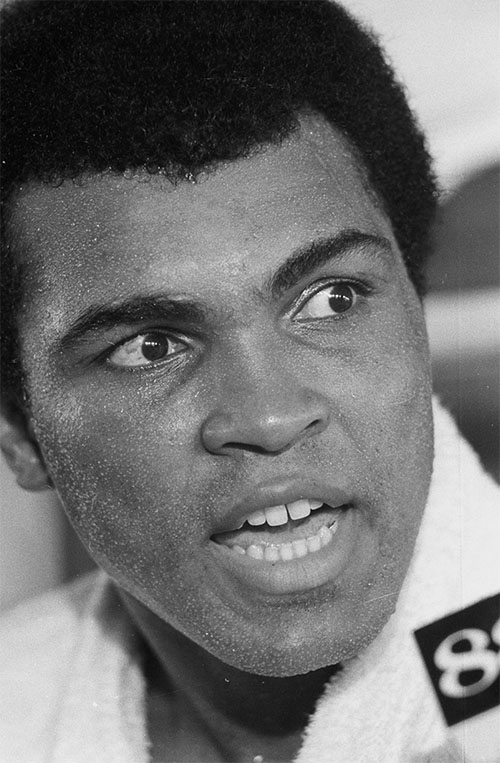 HULLFISH: Do you have an overall approach to documentary looking at and working with documentary material or does every doc need to be approached — in terms of organization or selects reels or whatever — diffrently? In narrative, so many people always approach the viewing and initial attack the same way on every project. Is there such a thing as a general approach to documentary material?
HULLFISH: Do you have an overall approach to documentary looking at and working with documentary material or does every doc need to be approached — in terms of organization or selects reels or whatever — diffrently? In narrative, so many people always approach the viewing and initial attack the same way on every project. Is there such a thing as a general approach to documentary material?
PUSHINSKY: A long time ago an editor friend of mine, Jeff Wolf — who has done a ton of scripted stuff and has more recently started making his own documentaries — said, “You start with 100 hours of footage. Your first goal is to get it down to 50 hours of footage. Then you’ve got your 50 hours of footage and your goal is to get it down to twenty five hours of footage.”
That’s always in the back of my mind, though I also know that it’s not always a reality. On this doc, we were dealing with upwards of a thousand hours between footage and audio and I can’t even begin to think about that or else I’ll just walk out.
It depends on the documentary. The difference between an historical documentary with interviews and a verite documentary and the difference in director styles and whether or not there’s a writer/story producer on board. There’s so many factors that go into it.
I’ve worked with Rob Epstein and Jeffrey Friedman a few times and when they do their interviews they get the transcripts and they highlight and they hand me a binder of selects from the interviews. So that’s a place to start with them.
But on this it started by diving into sections that I knew existed that I thought could be part of this story and trying to find that rhythm and feeling to the doc in the first place.
How serious are we going to be? How fun are we going to be? Is the cutting going to be very straightforward or are we going to get a little artful? Figuring that out at the beginning is such a big part of it in the first place.
For me I try to just sit in the footage and kind of feel what it is giving me and how was it shot? Was it shot in a way that I can be a little more playful and artful? Or is it shot very straightforward and it just needs to feel like that.
https://www.youtube.com/watch?v=dR3cfsVoGr0
HULLFISH: What kind of discussions do you have with Fuqua about tone or the artfulness of the edit?
PUSHINSKY: His first thing that he said to me was: “the goal of this is to show what made Ali great.” And that was what he kept harping back to. Why was he doing what he was doing?
Going in we didn’t really talk about tone or much of the editorial style. He let me go for a little while to dig into stuff. I cut a few things with a few different styles and showed him things and it was like: “I like that.” “I don’t like that.” “I like that.” “I don’t like that.”
Then, analyzing those notes I took it from there. He wanted it to feel cinematic. He wanted it to feel — in his mind — like a scripted story as much as possible.
HULLFISH
Did you get a paper cut? Or was it more of him looking at some of your “pods” and going from there? How did that back and forth work?
PUSHINSKY
We had conversations ahead of time. I read his treatment and we talked about it. He stepped away as I got the footage to see what we could create. We did the very loose (scene cards on a wall) pretty early on to just have these ideas of pods that I was gonna dive into.
We started getting some of the major clips transcribed. Any time Ali sat down and talked for more than half an hour I would try to get that transcribed and then I would hand those off to the writer. I would watch as well and pick stuff but he would start going through those transcriptions and making selects of those that he thought 1) should just try to fit its way into the film or 2) could fit in a specific place. But he was around and we had a lot of back and forth and a lot of conversations about the process.
HULLFISH: Congratulations on your ACE Eddie. What do you think it is about this movie that stood out to your peers?
PUSHINSKY: One thing is just you’re dealing with possibly the most documented man in the history of America — who never shied away from the camera — and turning that into a concise three hour film; not having new interviews and really being an all-archival film. We’re not the first people to do it but from the editorial standpoint — moreso than people who aren’t editors — understanding what that takes. What it means to get that done. But also it’s a fun movie to watch. It’s an emotional movie to watch. People also thought it was a fresh take on a lot of the stories that hadn’t been told.
“When We Were Kings” was an hour and a half documentary about just ONE of Ali’s fights. I have to try to show that fight in a couple of minutes. Having watched that doc, what can I do to make it different?
I found this one interview after that fight, but he’s talking about what he was thinking while he was in the fight. And I played it as if we’re hearing him thinking that while we’re watching the fight and it’s a whole other thing.
Yes it’s the same fight. We know who won. We know what happens. Somebody has used that interview at some point in the past but we haven’t watched that footage and heard that at the same time.
It’s an easy movie to watch and an enjoyable movie to watch. I think it stuck out to people. As far as editing goes — with such a big story to be able to sit down and not feel overwhelmed with the information that you’re getting…
I wanted people who don’t know him, don’t care about him, think they don’t like boxing, to be able to sit down and enjoy it, even though there is a lot of boxing in it. I think we did a good job getting it out there.
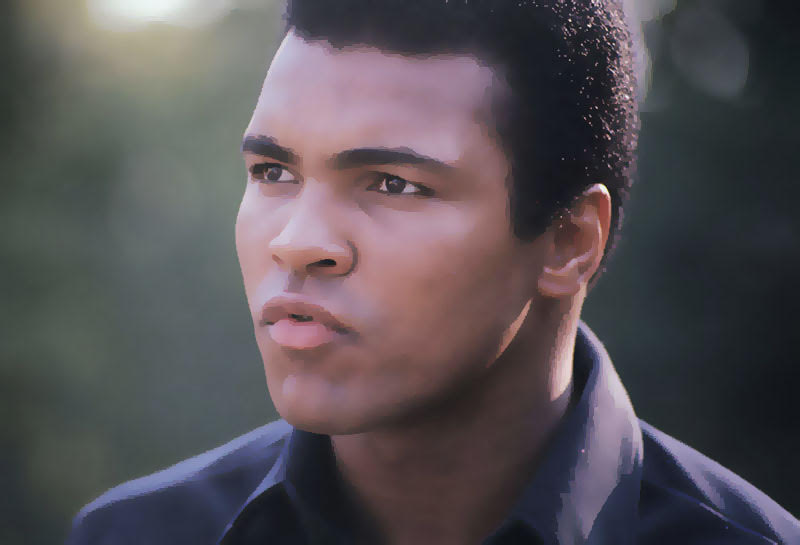 HULLFISH: And when you’re watching — to judge your peers — what are some of your considerations? What makes you look at something and say, “That guy should be up on the stage with me?”.
HULLFISH: And when you’re watching — to judge your peers — what are some of your considerations? What makes you look at something and say, “That guy should be up on the stage with me?”.
PUSHINSKY: For me it starts with just sitting and trying to enjoy the film and not analyze the editorial.
Editing is such a weird art form to judge on a few levels, but 1) mostly because unless you’re in the room, you don’t know who’s making those decisions. Is the director sitting back there saying, “Two more frames there. Three more frames there. That shot then this shot then that shot?”
Or is the editor putting stuff together and the director’s walking in saying, “Looks great. Here’s a couple of notes” and walks out. It’s such a hard one to say that’s great editing by THE EDITOR. As opposed to great EDITING or great storytelling.
So I try to sit back and enjoy the film as a first step. If I don’t enjoy the film it’s hard to say it’s great editing because it is such a major part of storytelling. How engaged in the story are you? For things that I love, I go back and watch again and then really start looking at the cuts and thinking about structure and thinking about what may have been on the page or what wasn’t on the page. Start overanalyzing.
One of the other things that I think that I had the pleasure of doing on this was to go on the two shoots we did. One was in Manhattan Beach and we were on a stage and built a ring and did some beauty shots of the ring. Got a couple of actors to come in and mimic some boxing and shot some of that stuff. And I got to be on the stage with Antoine shooting and discussing where and how that would all work in the film.
And then the other shoot we did was in Pennsylvania where Ali — in the early 70s — built a training camp and it’s still there. This beautiful piece of land that he bought and built these log cabins that are all still intact. We needed to decide how to use this beautiful location in this film that we’re doing where we’re not shooting much.
A lot of people think of editorial as: you’re stuck in that black hole and the footage comes in and it is what it is. But to be involved in that process and be a part of that decision-making and having input into what we’re shooting so that I can actually use it is great.
https://www.youtube.com/watch?v=V5CZ7p6F_vI
HULLFISH: So what input did you have? Obviously it was requested, but then what was the value of having you there?
PUSHINSKY: In the first shoot that we did — where we were on the stage with the ring and the boxers — that was about six months into the process, so I went through what I had cut at that point, look for places where we might be able to use things and or places that could potentially fit in and sitting with Fuqua while we are shooting and having my laptop with a couple of the scenes that I cut and discussing how we would go into stuff.
For that 1960 Olympics we knew that that was going to be one of the major fights — I kind of picked a few of the major fights that we would potentially use some footage for. At such a young age he was always known for his fast feet. I started noticing in the footage that it started very early.
One of the shots that I wanted to make sure to get was a close up of “his” feet because in that 1960 footage, they’re not doing anything like that. It was basically a wide shot and maybe get the faces at the end, but they weren’t thinking about his feet.
Going back to the idea of me jumping between the scripted and the doc space, I’m thinking of the shots that they would get if this was a scripted narrative and asking for those kinds of shots that I knew they would give me. They would be thinking about all that coverage but you don’t get it in archival docs.
And then tonally — when we went out to Pennsylvania — how do we introduce this new location? This place was just lush, green, beautiful. Far from what anybody would think of! And trying to figure out how those two can work together in some of this footage that I saw and trying to figure out those real transitions.
So being there and living in the space and looking around I could remember seeing a specific building from the archival footage, so then you can help build transitions into and out of it. Thinking about those and having those conversations really helped.
HULLFISH: The transitions are the trick with those things that are very different than the rest of the material, right?
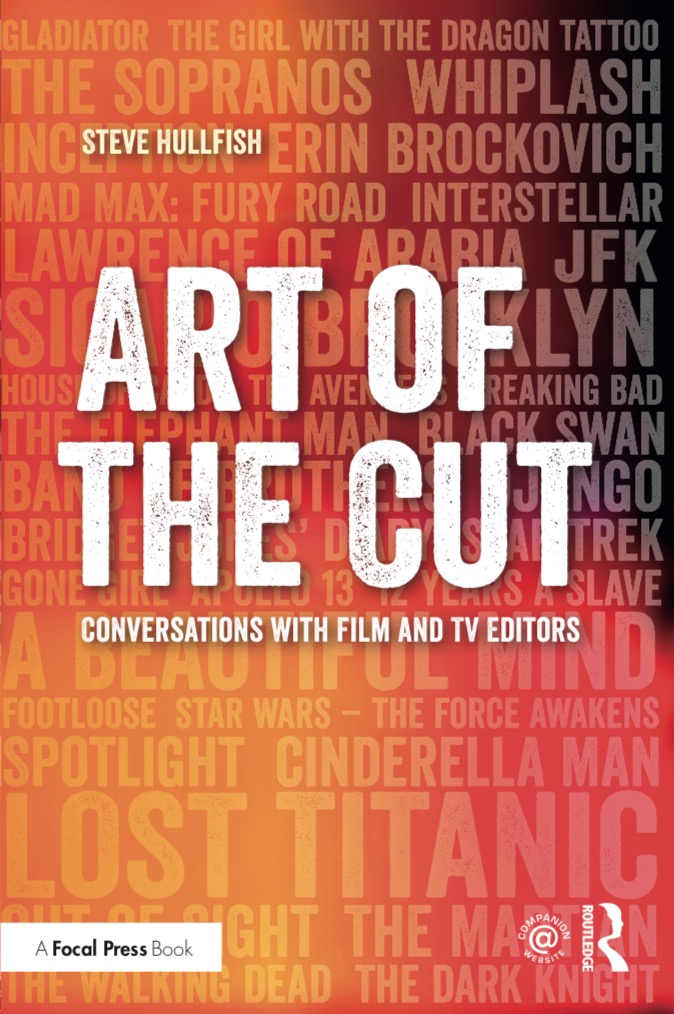
PUSHINSKY: Yeah.
HULLFISH: All right. Well thank you so much for a great conversation. It was wonderful talking to you.
To read more interviews in the Art of the Cut series, check out THIS LINK and follow me on Twitter @stevehullfish or on imdb.
The first 50 interviews in the series provided the material for the book, “Art of the Cut: Conversations with Film and TV Editors.” This is a unique book that breaks down interviews with many of the world’s best editors and organizes it into a virtual roundtable discussion centering on the topics editors care about. It is a powerful tool for experienced and aspiring editors alike. Cinemontage and CinemaEditor magazine both gave it rave reviews. No other book provides the breadth of opinion and experience. Combined, the editors featured in the book have edited for over 1,000 years on many of the most iconic, critically acclaimed and biggest box office hits in the history of cinema.

Filmtools
Filmmakers go-to destination for pre-production, production & post production equipment!
Shop Now